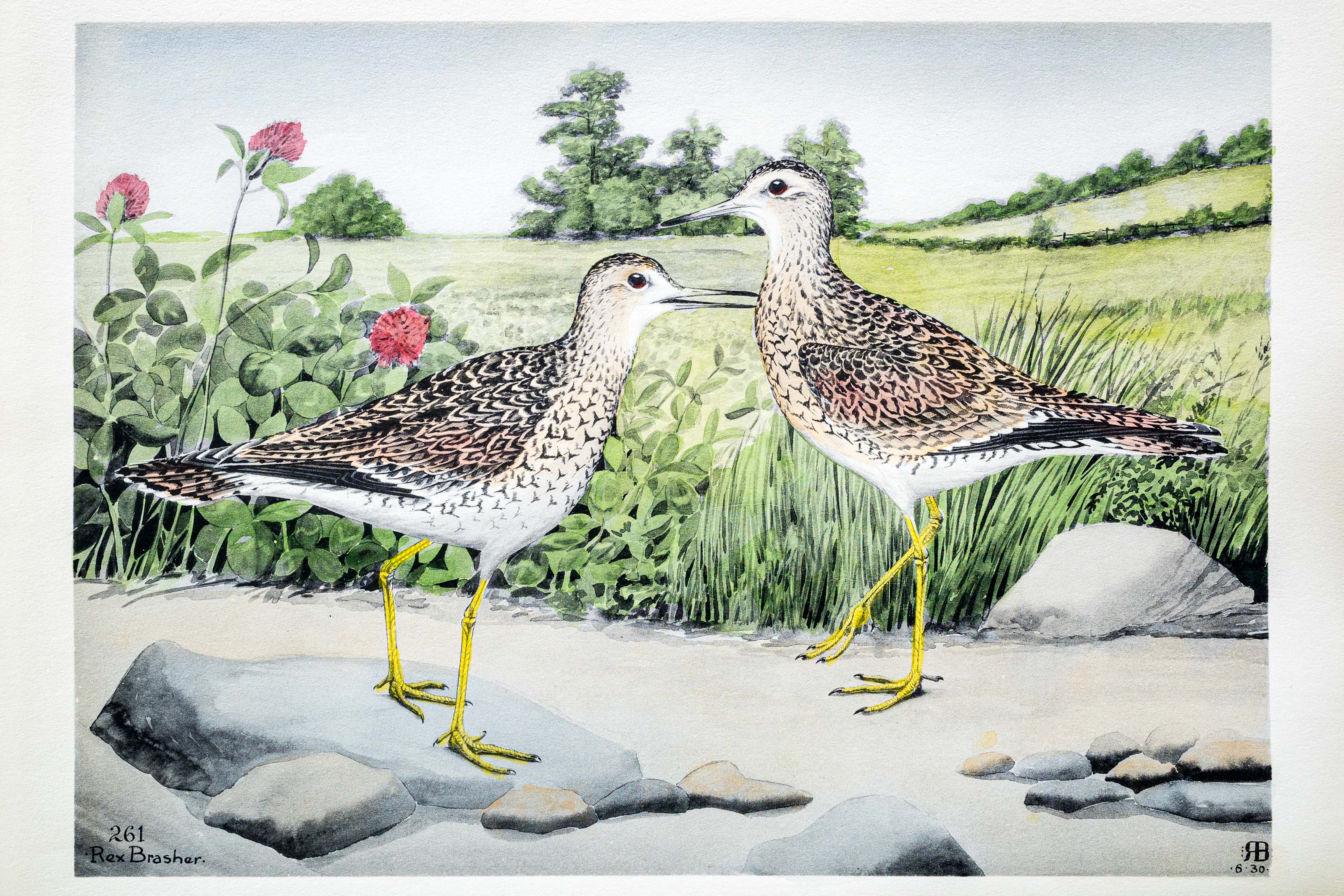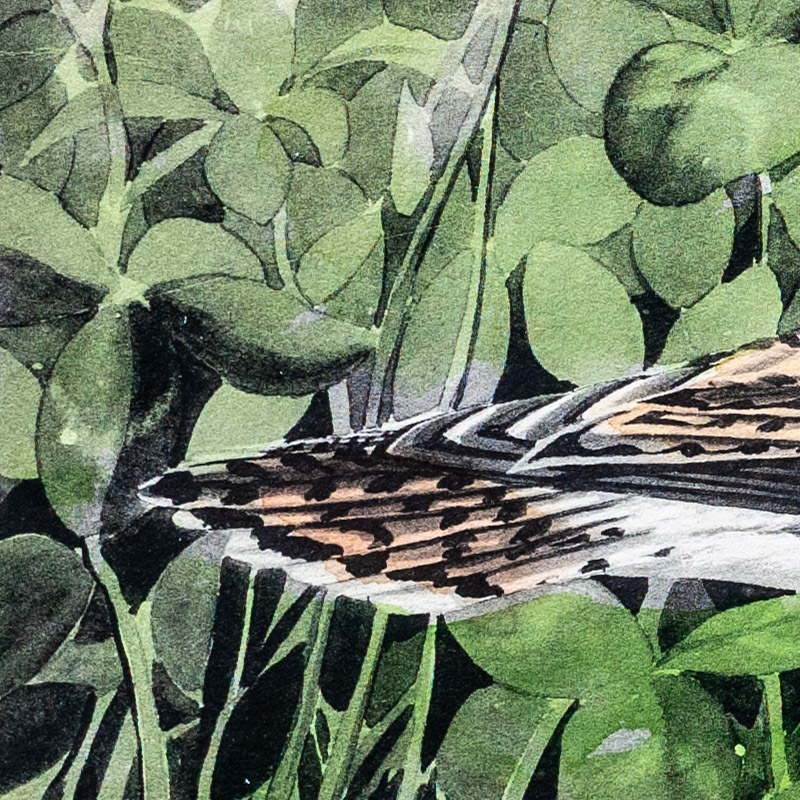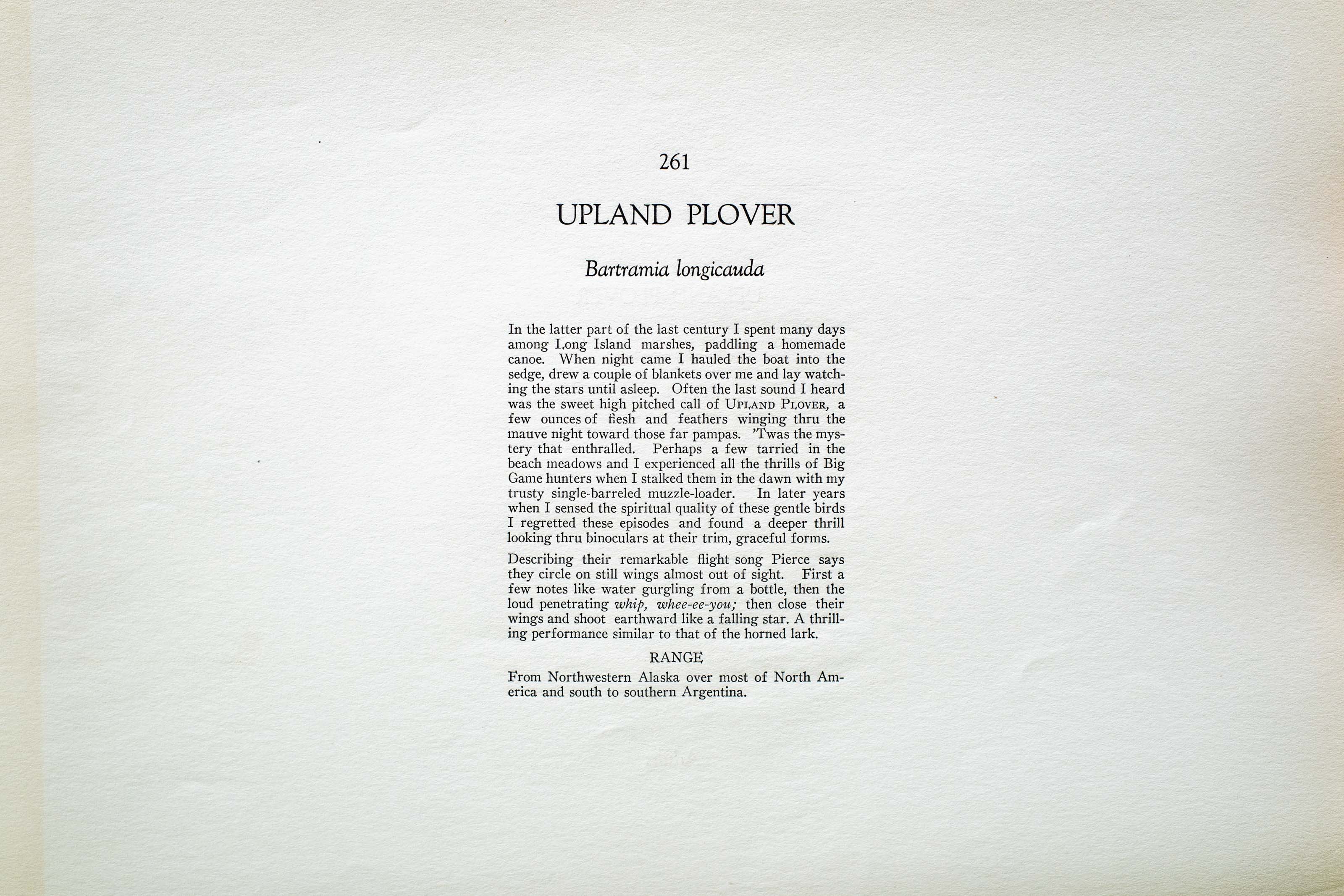






Unknown
1930
4
261
A team of dedicated board members, volunteers, and student interns has published every page in Volume 9. This volume includes 360 images of paintings and lyrical descriptions of birds, now available online for everyone to enjoy anywhere in the world. This is a monumental task. Each volume requires approximately 400 hours to photograph, edit, transcribe, catalog, and publish online. We need your support to complete this work.
If you're tech-savvy, have a good eye, are meticulous with details, and love structured data, please consider volunteering by emailing us at hello@rexbrasher.org.
We encourage all bird lovers and supporters to consider a monetary donation to support our mission to make Rex's work available for everyone. You can provide a one-time or recurring donation online.
In the latter part of the last century I spent many days among Long Island marshes, paddling a homemade canoe. When night came I hauled the boat into the sedge, drew a couple of blankets over me and lay watching the stars until asleep. Often the last sound I heard was the sweet high pitched call of UPLAND PLOVER, a few ounces of flesh and feathers winging thru the mauve night toward those far pampas. 'Twas the mystery that enthralled. Perhaps a few tarried in the beach meadows and I experienced all the thrills of Big Game hunters when I stalked them in the dawn with my trusty single-barreled muzzle-loader. In later years when I sensed the spiritual quality of these gentle birds I regretted these episodes and found a deeper thrill looking thru binoculars at their trim, graceful forms.
Describing their remarkable flight song Pierce says they circle on still wings almost out of sight. First a few notes like water gurgling from a bottle, then the loud penetrating whip, whee-ee-you; then close their wings and shoot earthward like a falling star. A thrilling performance similar to that of the horned lark.
From Northwestern Alaska over most of North America and south to southern Argentina.